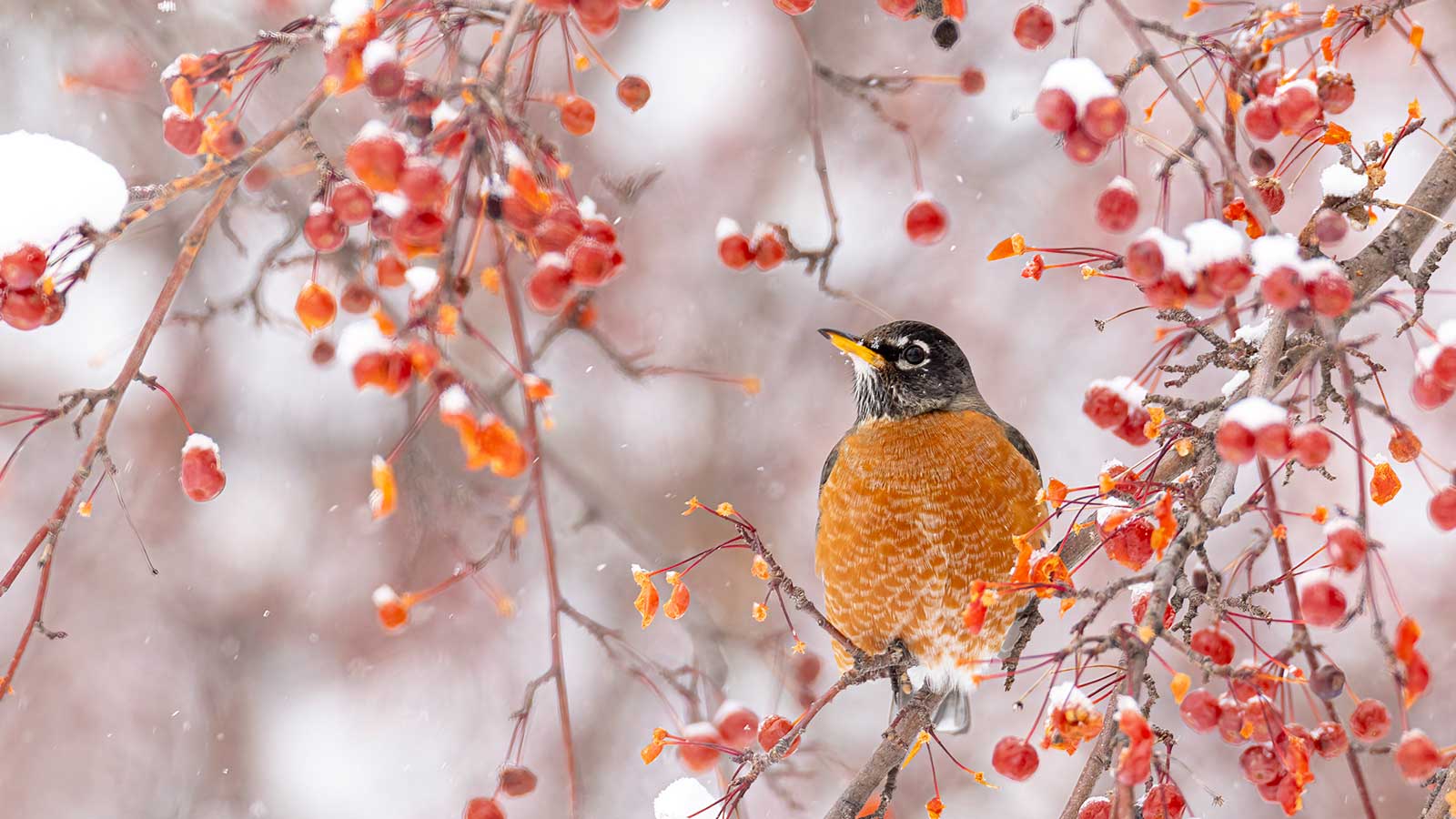
Robins bring joy to the garden with their curious nature, cheerful chirps, and flash of red feathers. While many American robins migrate south for winter, some can stay, and there are ways to help them survive the colder months.
Providing food is a key part of helping backyard birds in winter, so it's useful to know which snacks to offer (and how best to present them). Water and shelter are also important.
I turned to wildlife experts to find out more about these colorful characters. Below, they provide their tips. You'll also find advice for caring for the smaller European robin – a familiar visitor in British winter gardens.
Feeding robins in winter
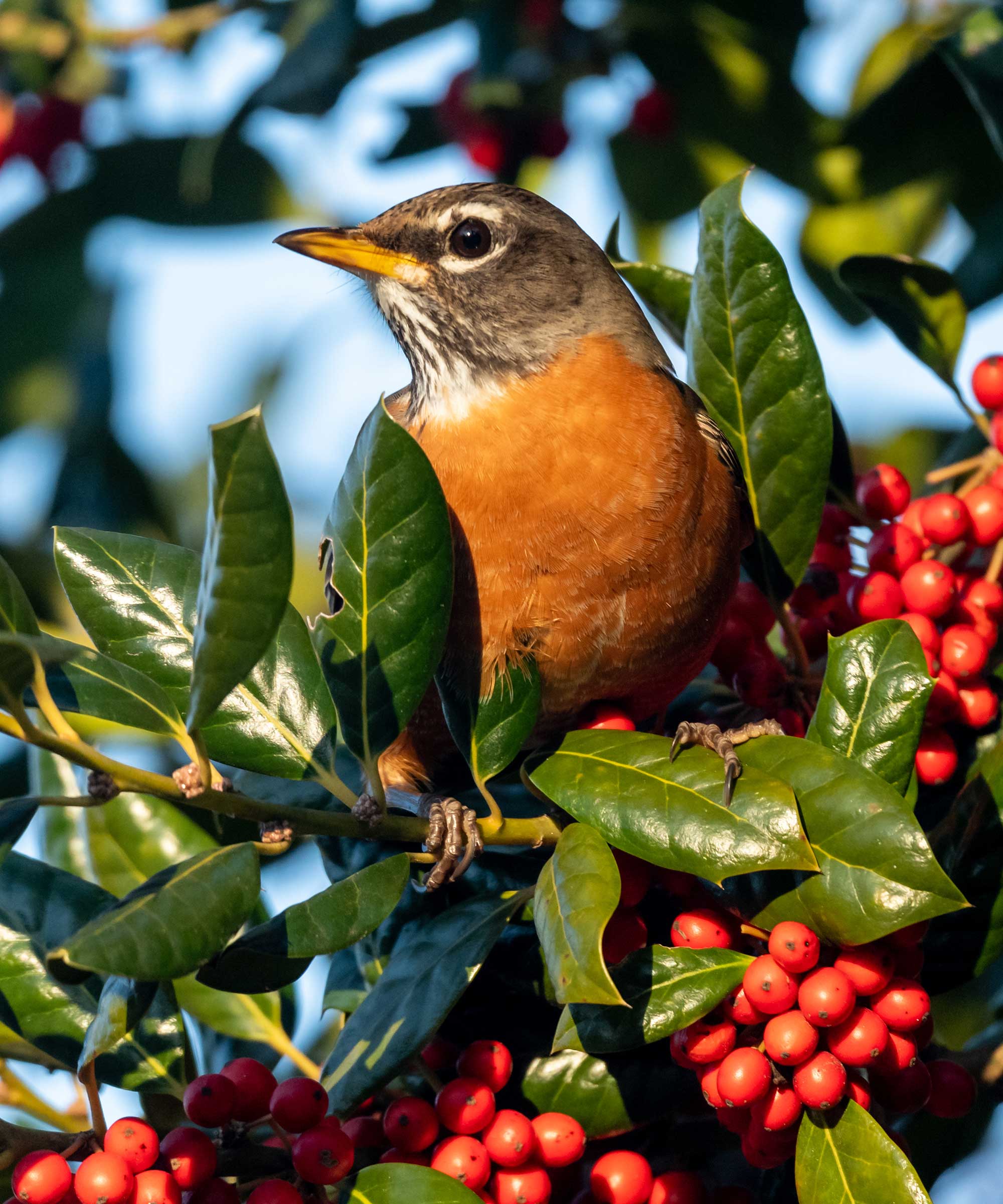
Feeding birds in winter is the first port of call for supporting them this season. American robins’ usual diet consists of insects, earthworms, fruits, and berries. ‘Their digestive systems are made for softer foods, so they will likely only eat seeds if preferable foods are scarce,’ says Mary Phillips of the National Wildlife Federation.
'I personally feed them mealworms,' says Isabelle Manseau, the owner of Birdzy.com. In terms of fruit, she recommends setting out berries, orange halves, or chopped apples.
'Want to go the extra mile? Plant fruiting shrubs like crab apples or holly in your yard,' Isabelle adds. 'These provide a natural buffet for robins when snow blankets the ground. It’s a straightforward way to keep them coming back, and it adds beauty to your garden year-round.' Mary recommends consulting The National Wildlife Federation’s Native Plants Finder to find species appropriate by region.
Top tip: Robins are naturally ground feeders, so instead of using hanging feeders, offer food on flat surfaces such as bird tables, ideally close to or on the ground.

Treat visiting robins to a tasty, protein-rich snack this winter by providing them with mealworms. Many other garden birds will enjoy them, too.
Providing water for robins
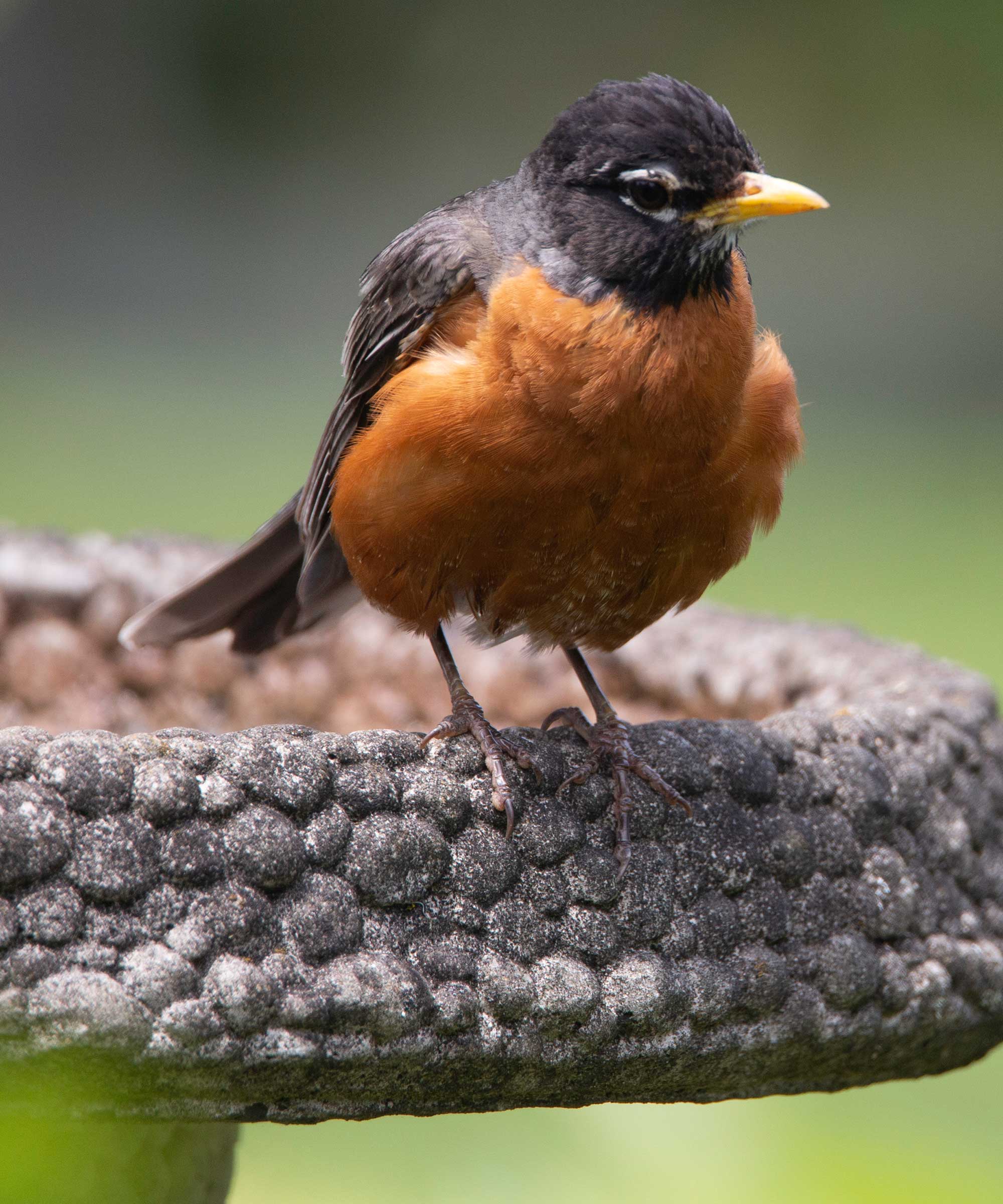
‘Providing a water source in winter benefits wildlife, especially when natural sources are frozen,’ says Mary. ‘Although birds can hydrate by consuming snow, it requires them to expend valuable energy.’
Isabelle recommends keeping a shallow bird bath filled and using a bird bath heater to prevent freezing. 'I’ve seen birds flock to mine on frigid days. It’s amazing how much they rely on it. Just remember to clean it regularly to prevent disease. A simple rinse with warm water will do the trick.'
Offering shelter for robins
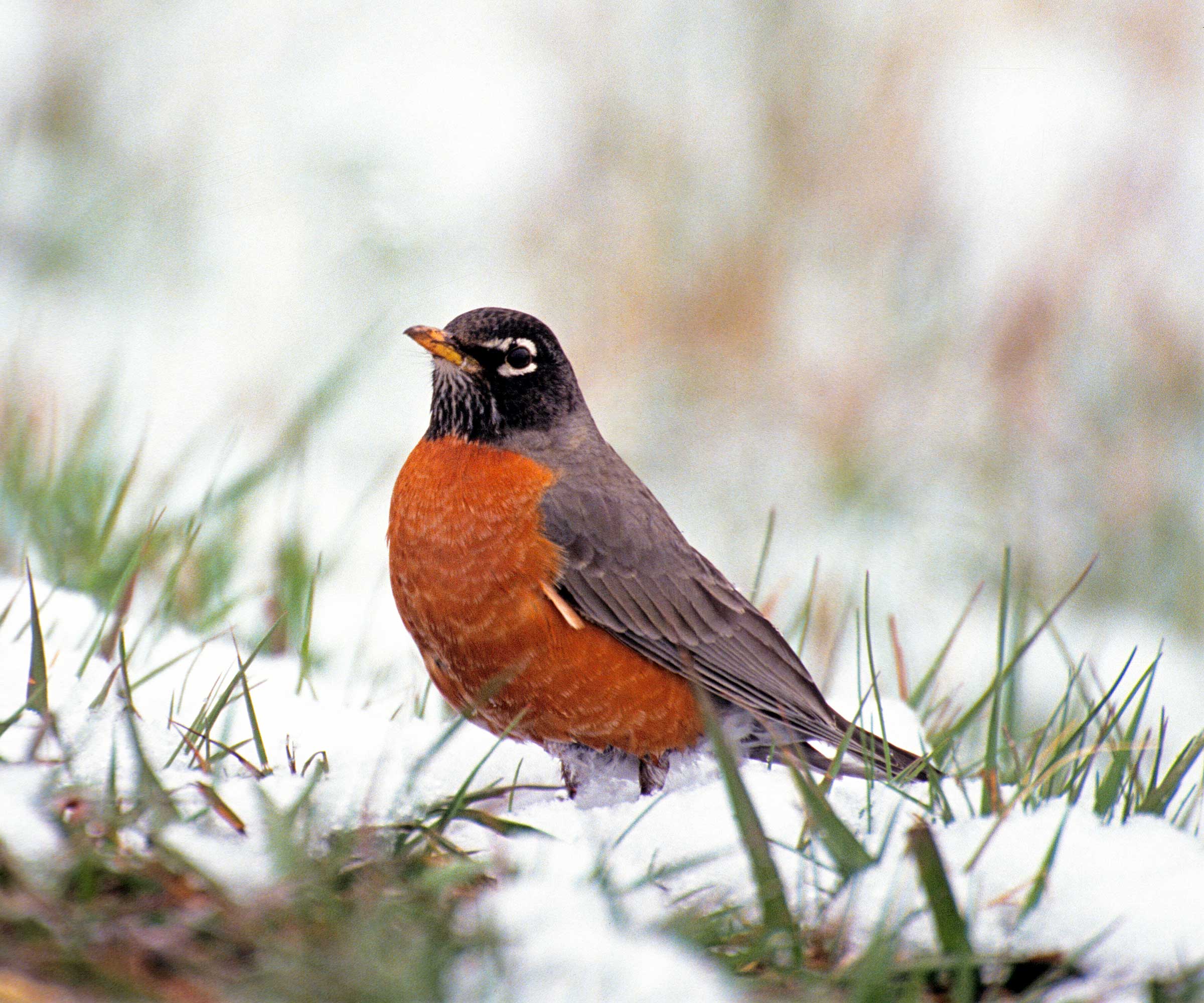
American robins don’t use birdhouses, but they’ll appreciate dense shrubs or brush piles for protection from wind and predators, says Isabelle.
Evergreen shrubs can come in handy here, and will bring year-round greenery to your space, too. 'If your yard lacks natural cover, leave a corner untrimmed or stack branches from fall pruning,' Isabelle adds. 'It’s easy to overlook this step, but it provides the shelter robins need to stay warm during long winter nights.'
Mary also recommends leaving decaying logs or dead trees (that don’t pose a danger) – ‘Decaying wood attracts insects, providing an added food source for robins as temperatures begin to warm in early spring,’ she says.
FAQs
What is the difference between American robins and European robins?
Despite having the same name, similar reddish-orange markings, and a similar diet, American and European robins are actually two entirely different types of birds.
American robins are commonly spotted in northern America, are larger than European robins, and are a type of thrush. Meanwhile, European robins are a type of old world flycatcher and are more solitary by nature.
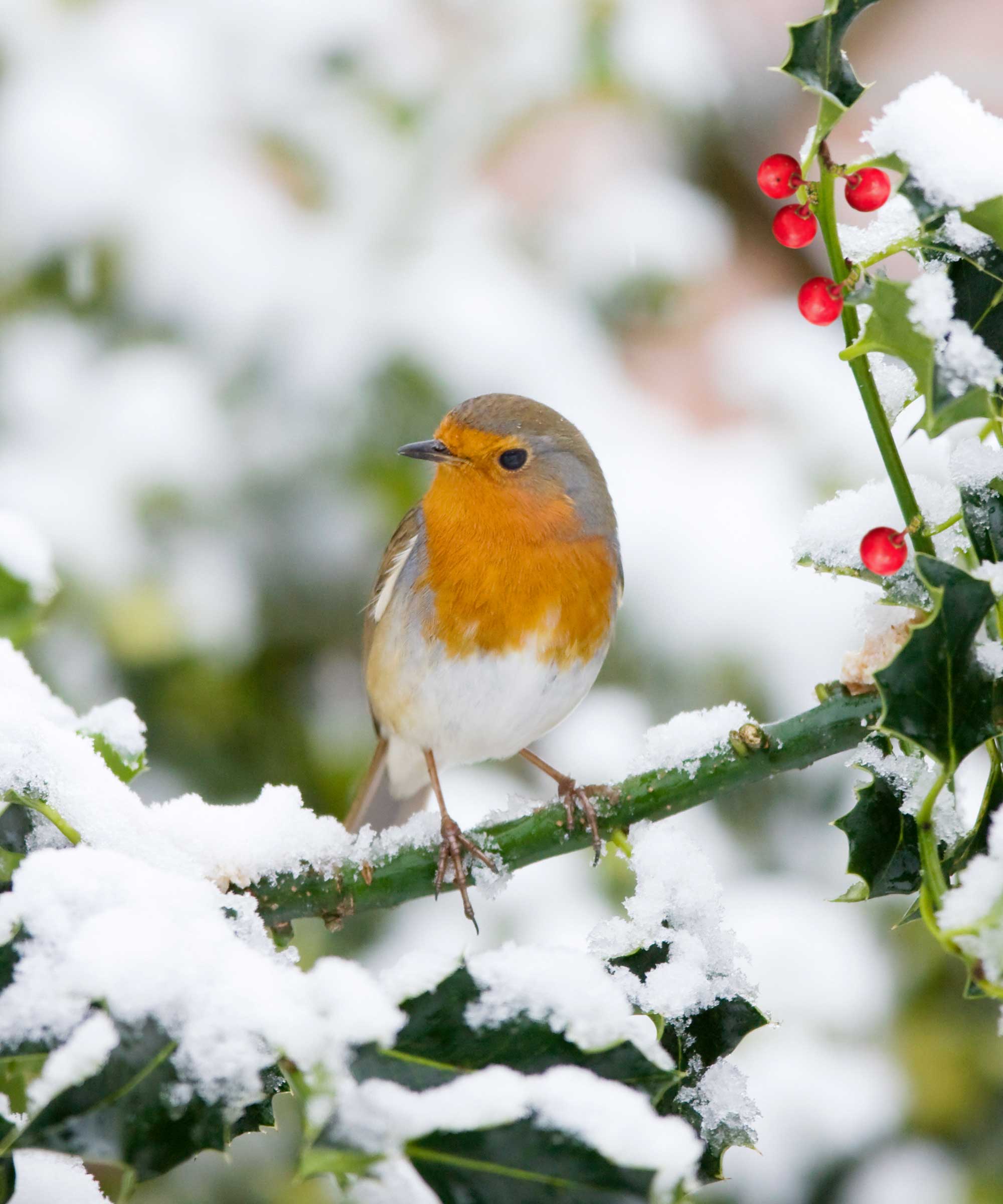
How can you care for European robins in winter?
Sean McMenemy, the founder of Ark Wildlife, says European robins love little nooks in hedges, under shrubs, or tucked away in quiet corners with ivy. But, if you’d like to give them a bit of extra help, he recommends putting up a special robin roosting pouch or nest box. 'Robins prefer an open-fronted box – no small hole, just an open front – to make it easy for them to hop in and out. Set it up in a quiet, shady spot, away from wind and rain. Add a bit of cover around it – like a few leafy branches – and robins will feel safe, warm, and right at home.'
For food, Sean recommends giving European robins mealworms in winter. 'These little bites are packed with protein and fat, perfect for keeping robins warm and full of energy.' You could also provide calcium worms: 'These have an extra boost of calcium, which is great for their bone health when they can’t find their usual insect favorites.'
Suet pellets are another option. 'These high-energy treats are full of fats that help robins keep their strength up when winter weather makes food hard to find.' These birds also enjoy nibbling on fruits such as apples, pears, and even sloe berries, he adds.
Don’t forget to provide water for these little creatures, too.
There are other ways to help visiting creatures through the cooler months, such as growing winter plants for wildlife. Our guide has some top options recommended by the pros.







